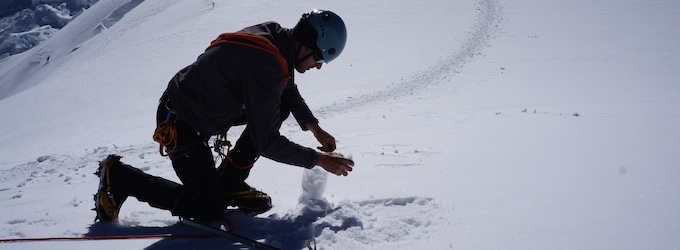Light absorbing particles on snow
When I started this research, I thought I was looking for black carbon, but while black carbon is a major component of light absorbing particles on snow, it is not the only thing that absorbs light and causes snow to melt. The term Black Carbon gets people’s attention better than light absorbing particles though.
Overview: The sun produces a lot of energy, all you need to do is go outside on a sunny day wearing a black shirt. You will feel the sun’s energy. Snow is white which means that it reflects a large portion of the visible light that hits it. The solar energy does very little to melt snow because it reflects away. If there are light absorbing particles on the snow though, these particles will absorb the solar energy and could lead to increased snow loss. The amount of light absorbing particles on snow is a function of a lot of different factors and is very important to understand in a changing climate.
I stumbled onto this line of research in advance of the first ACSP expedition in 2011. I was searching for a topic to study that was new to the region and that we could easily do. After a few false starts, I developed a sampling technique that has stayed mostly invariant over the time we have been running ACSP. For information on my technique for sampling, see my business website www.naturalsystemsresearch.com .
As of 2019, I have collaborative relationships with scientists and students doing light absorbing particle measurements all over the world. My main focus has been to increase the opportunities for conducting research by developing local networks of people collecting samples as early results have shown that it is very difficult to understand the impact of light absorbing particles from only one set of samples or from only one season.
It gives me great pleasure to be able to point to my publications page at the peer reviewed publications lead by my student collaborators in Peru. Wilmer Sanchez Rodriguez has published an article on light absorbing particle measurements and their relation with el niño in the Cordillera Blanca. Christian Torres has published a paper on measurements of light absorbing particles on Huaytapallana glacier in the Huancayo region of Peru. Both these publications are in Spanish language journals, and both went through rigorous peer review.

